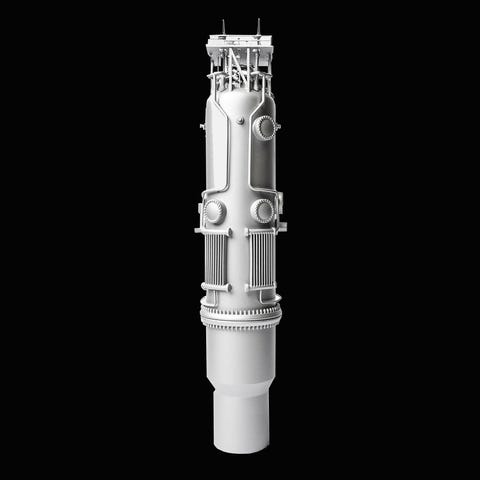The Department of Energy (DoE) has started a new Office of Nuclear Energy project called the Advanced Reactor Demonstration Program (ARDP). The $230 million program will give $160 million to scientists working on two reactor designs that “can be operational” in the very near future.
The “Advanced” part of ARDP is an industry term for the generation of reactors we have today. The World Nuclear Association explains:
“Generation I reactors were developed in 1950-60s. Generation II reactors are typified by the present US and French fleets and most in operation elsewhere. So-called Generation III (and III+) are the advanced reactors, though the distinction from Generation II is arbitrary. The first ones are in operation in Japan and others are under construction in several countries.”
Generation IV—the super advanced reactors?—are in the research phase, but the ARDP statements mention development into the mid 2030s and likely includes generation IV.
So the technical difference may be arbitrary, but the advanced reactors are often safer, smaller in overall form factor, and more standardized in order to be easier to install and scale. Most existing power plants are idiosyncratic, built on a case-by-case basis to suit individual communities or use cases. A more uniform process means plants that are easier to secure, support, and regulate.
“Advanced nuclear energy systems hold enormous potential to lower emissions, create new jobs, and build a strong economy,” Rita Baranwal, Assistant Secretary for the Office of Nuclear Energy, said in a DoE statement.
One of the leading projects the Nuclear Energy Institute (NEI) mentions may sound familiar: “NuScale Power LLC is expected to receive the first small modular reactor design certification from the U.S. Nuclear Regulatory Commission later this year,” the NEI reports. NuScale’s tiny modular reactor is designed to be deployed for small communities with lower power needs and embodies advanced reactor values. (NuScale received previous funding and is not eligible for this program.)
The DoE is linking the ARDP announcement with the recent Strategy To Restore American Nuclear Energy Leadership, whose recommendations include “taking immediate and bold action to strengthen the uranium mining and conversion industries” and “supporting the U.S. nuclear energy industry in exporting civil nuclear technology.” (Maybe Elon Musk will be able to manufacture those 10,000 nuclear missiles after all.)
Nuclear energy is pushed by the government primarily for its ability to reduce carbon emissions, but the NEI stresses that advanced reactors are more flexible than just that. The NEI explains:
“Once built, the advanced reactors being designed today will vary in size from our current reactors and may be used for additional purposes such as desalination, producing steam for industrial uses, and hydrogen generation for industrial and transportation needs.”
Organizations can apply to three “pathways” for funding through this program. “Rapidly demonstrating advanced reactor designs [are] necessary to provide clean energy and expand market opportunities before access to key infrastructure and supply chain capabilities in the United States is lost,” the DoE explains.
The first pathway is to demonstrate a new light reactor design that must be fully functional within 7 years in order to receive the funding. The second is for up to five groups to turn working reactor designs into more commercially viable and regulation-ready versions. And finally, the project funds research that is strictly in the realm of the imagination in 2020, but will be ready for the runway by the “mid-2030s.”
Source: Popular Mechanics



